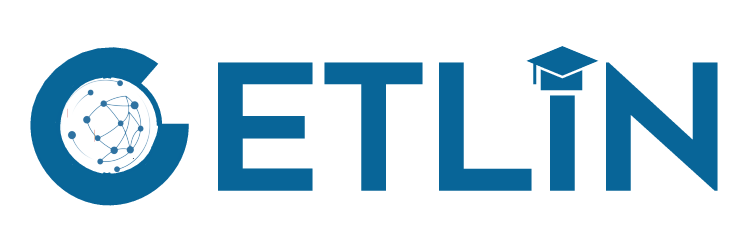Socio-political context & implications for teaching/educational policy
Mongolia proclaimed the education as a priority sector and, therefore, implemented the certain policies to increase access and quality of education in phased manner (Education and Social Development Center, 2019). The following strategic documents related to the education sector have been adopted and implemented since 2000:
- Education Sector Master Plan(ESMP) 2006-2015[1];
- MDG based Comprehensive National Development Strategy of Mongolia 2007-2021[2]; and
- State Policy on Education 2014-2024.[3]
These documents define the policies and strategies for development of educationsector during two development phases: 2006-2015 and 2016-2021. The policy on teachers constitutes an important part of these phases. The MDG based Comprehensive National Development Strategy of Mongolia in particular defines 6 targets: 3 targets each for 2 phases of education development. The following 2 targets are directly related to teachers:
- Comprehensive resolution of the issues by ensuring the professional and methodological development, remuneration, allowances and social safety of teachers, and drastically increase of investments in these areas; and
- Development of school based management and revision of school mapping, including structure, type and location of schools.
The following strategic documents approved and implementedthe teacher targets:
- National Program for Basic Education for All 1995-2000[1]
- National Program for Pre and In-Service Teacher Training for Primary and Secondary Education 2001-2010[2];
- National Program for Pre and In-Service Teacher Training for Preschool, Primary and Secondary Education 2009-2015[3]; and National Program for Education 2010-2021.[4]
The following national targets have been identified in the above-mentioned national programs:
- Reform a pre-service teacher training into a demand-driven, flexible and stable system;
- Develop a flexible, decentralized, optional and sustainable teachers professional development system;
- Create a mechanism to improve teachers’ performance evaluation and to encourage and promote their productivity; and
- Comprehensively resolve issues related to the teachers’ professional and methodological development, remuneration, incentives and social safety, and drastically increase investment and results in these areas.
Based on the analyses of the policy documents produced by the UNESCO (2019), the teachers’ policies are categorized into 4 phases:
(i) disintegration phase of a previous system (1990-1995);
(ii) beginning of policies, programs and plans on provision of professional teachers in support of a new education system (1995-2006); (iii) creation of new legal environment of teaching based on the principle of constructivist theory of learning (2007-2011); and
(iv) restoration of institutionalized system of teachers professional development (2012-2018).
During these phases, many legal documents in support of teachers’ workplace and development have been revised and newly approved in the phased manner (UNESCO, 2019).
During the transition to a new socio-economic system, there was a shortage of teachers in primary and secondary schools due to the increased number of teachers leaving the education system due to its fiscal constraints. Therefore, as discussed above, the policy documents placed a great importance on supply of professional teachers to schools between 1995 and 2005. Compared to that period, the supply of teachers have greatly improved. The provision of the secondary teachers has reached above 98% since 2006. Between 2009 and 2015, the supply of teachers estimated at around 99% to 100%, but this indicator has been falling down since 2016.

Current trends in educational policy and practice (e.g. relevant curricular reform cycles) & regional differences
Education reform of 2012 emphasizing ‘developing each and every student’ changed the concept of ‘skilled’ or ‘good’ teacher.Critiques that teachers only focus on olympiad promising students and ignore the rest changed the requirements. The current teacher evaluation system assess teachers’ performance by 5 criterion which are students’ academic achievement, character development, student’s talent, health and parents’ satisfaction.
Mongolia changed its ally and has been repeating education reforms learning from international systems and experiences for last three decades. As mentioned in the previous section, teachers whose students or themselves participate in the subject olympiads or subject competitions successfully were considered as ‘good teachers’ in the socialist period and after that. A strong critique that was a main rationale of education reform of 2013 was that the teachers focus on strong and potential students and leave behind the mass. A new government established in 2012 initiated a program “Upright Mongolian child” that brought primary and secondary education reform. The concept of the reform “developing each and every child” from Whole child approach led teachers to work in different way. Subject competitions for primary education were prohibited and many schools stopped providing subject intensive programs that were targeted for olympiads. Instead, more inclusive principles such as providing equal opportunities for every student, referring to students’ developmental differences, developing each student’s talent, interest and characteristics, equipping students with learning strategies were strongly required from schools and teachers. Educational goals and objectives integrated more 21st century skills and gave more emphasis on learning skills in primary and secondary education. The curriculum concept defines what teachers’ behavior is expected at classrooms.
Current international examinations (PISA, TIMSS)
Mongolia is planning to participate the PISA for the first time in 2021 (or 2022). Although Mongolia attended TIMSS in 2007, the achievement result was excluded from the comparison because of poor documentation of the samples and data.
